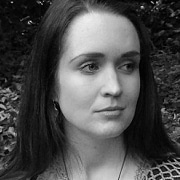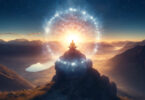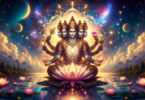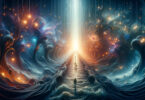Guest writer for Wake Up World
All throughout this website and our work here on lonerwolf, we’ve spoken about the spiritual awakening process. We’ve gone into the endless facets of the spiritual journey. We’ve explored in-depth a huge variety of healing practices for the body, heart, mind, and soul.
But there comes a point on everyone’s spiritual path when there is a feeling of utter exhaustion.
When we’ve tried all the healing practices, gone to all the retreats, done the detoxes, read all the books, taken tons of courses (or maybe even just the thought of doing this all feels “off”), what next?
Don’t get me wrong. On a human level, it’s crucial to have some kind of guiding “roadmap” and practices to carry out because it helps to settle, ground, and orient the mind and heart.
But on a deeper level, on the level of not just Soul, but Spirit, what we’re always and only ever searching for is Home, Freedom, Love, and Peace. Or what is known in Vedanta philosophy as Sat-chit-ananda or “truth, consciousness, bliss.”
For those who reach a point of utter depletion, for those who feel that there’s “something more,” and have done bucketloads of inner work but still feel there’s something missing, non-duality is the full stop at the end of the sentence.
In my many years on the spiritual awakening journey, the most direct path I’ve found to Illumination, True Nature, Self-Realization, or Oneness is the path of non-duality.
What is Non-Duality?
The word ‘non-duality’ comes from the Sanskrit word Advaita which means ‘not two.’ Therefore, put simply, non-duality points to the basic Unity of everything – that ultimately, there is no division or separation between you or anything else in your experience.
While non-duality is thought to be a philosophy primarily found in the Hindu mystical path of Advaita Vedanta, it is also found all throughout the world in paths such as Buddhism (Nirvana), Sufism (Wahdat al Wujud), and Christianity (Henosis).
Meaning of Non-Duality (Explained in More Detail)
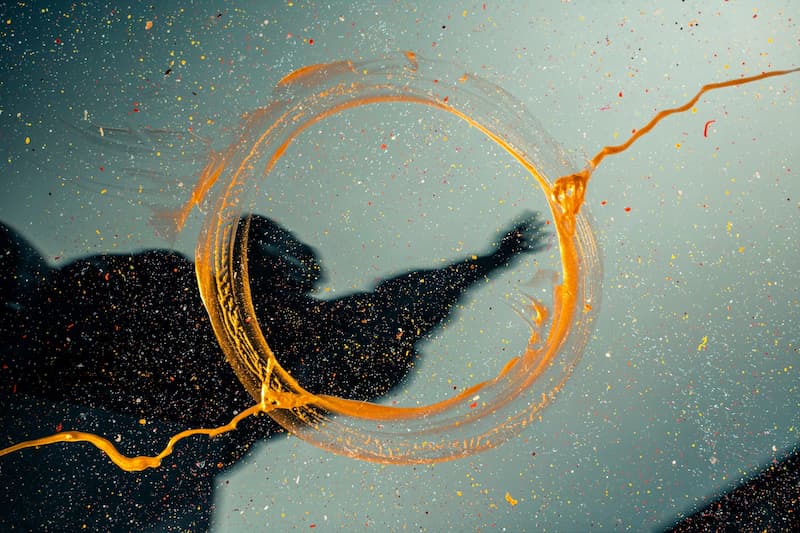
To understand the meaning of non-duality a little more in-depth, let’s break down some of the basic facets of non-duality which are:
- Everything is One
- There is no separate self
- This is It!
Everything is One
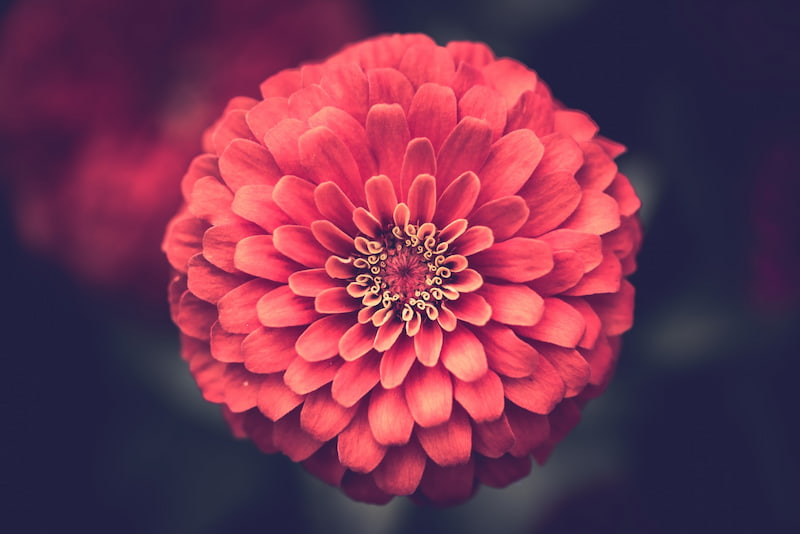
The reality is that non-duality may appear totally strange, confusing, and even nonsensical to our minds at first. After all, our minds work by creating divisions through words, concepts, and ideas – and the notion that “everything is One” is diametrically opposed to that.
We might wonder, how can everything “be One” if there are clearly differences in our experience. We go to bed and it’s nighttime, and we wake up and it’s daytime. We talk with a friend and then we see an enemy. We eat a banana and then we eat an orange. These are all different things, right?
While yes, on the surface this is the case, non-duality ultimately points to the underlying interconnectedness of everything. Zen Master Thich Nhat Hanh refers to this as ‘interbeing’ – or, the fact that one thing cannot exist without the other.
Thich Nhat Hanh describes it in this way,
??If you are a poet, you will see clearly that there is a cloud floating in this sheet of paper. Without a cloud, there will be no rain; without rain, the trees cannot grow: and without trees, we cannot make paper. The cloud is essential for the paper to exist. If the cloud is not here, the sheet of paper cannot be here either. So we can say that the cloud and the paper inter-are.
“Interbeing” is a word that is not in the dictionary yet, but if we combine the prefix “inter” with the verb “to be”, we have a new verb, inter-be. Without a cloud, we cannot have paper, so we can say that the cloud and the sheet of paper inter-are.
The same is true with anything in our experience. Without the dark, we wouldn’t understand light. Without pain, we wouldn’t understand pleasure. Without loudness, we wouldn’t understand quietness.
Science has found that everything is ultimately energy at its core (E = mc2) and mystics through the ages have pointed out, in different ways, that “all is God.” On a fundamental level, we can sense that there is something that unifies all of us. Non-duality goes that extra step further and says that actually, we were never truly separate to begin with.
The only separation there apparently is has been constructed by the mind. This leads us to the next point:
There is No Separate Self

As the enlightened sage, Ramana Maharshi is recorded to have said,
You have to ask yourself the question ‘Who am I?’ This investigation will lead in the end to the discovery of something within you which is behind the mind. Solve that great problem and you will solve all other problems.
This question, “Who am I?” seems simple enough. Our immediate response may be something like, “My name is Bob/Jane and I was born in ____. I’m a parent of two children, work as an assistant, am 36 years old, and I love tennis.”
Take a moment to think about your own story, your own sense of self. Write it down if you want to get a solid sense of it … consider your personality, your likes/dislikes, your interests, your family, your dreams, your fundamental sense of “me.”
Now, take that piece of paper, scrunch it up, and throw it in the trash can.
Okay … that might be a little dramatic, but you might as well. When it comes to non-duality, your sense of “me” – that story that goes on in your head about yourself – is not only totally irrelevant but also completely make-believe.
Why?
In a nutshell, if you try and search for that sense of “me” within you, you’ll find that there is no one there.
As spiritual teacher Mooji says,
When we look with the “I” we dream.
When we look for the “I” we awaken.
The deeper we look through practices such as meditation, the more vividly we discover that there is no solid and unchanging sense of “me” within us.
We come to discover that we’re not our thoughts. We’re not our feelings. We’re not our preferences. We’re not our bodies. We’re not our experiences. Who we are is always shifting and evolving.
Our sense of self was different at 5, different at 15, and different at 25. In fact, our sense of self is forever morphing each and every moment! One moment we feel angry, then happy. The next moment we’re interested in movies, then we’re interested in video games. The “you” now won’t be the same “you” in a year from now, even a few moments from now!
So who are we then?
That is the central question asked by non-duality. And while we can say that who we are is Consciousness or Life itself, the answer can only be experienced directly to be truly understood.
This is It!
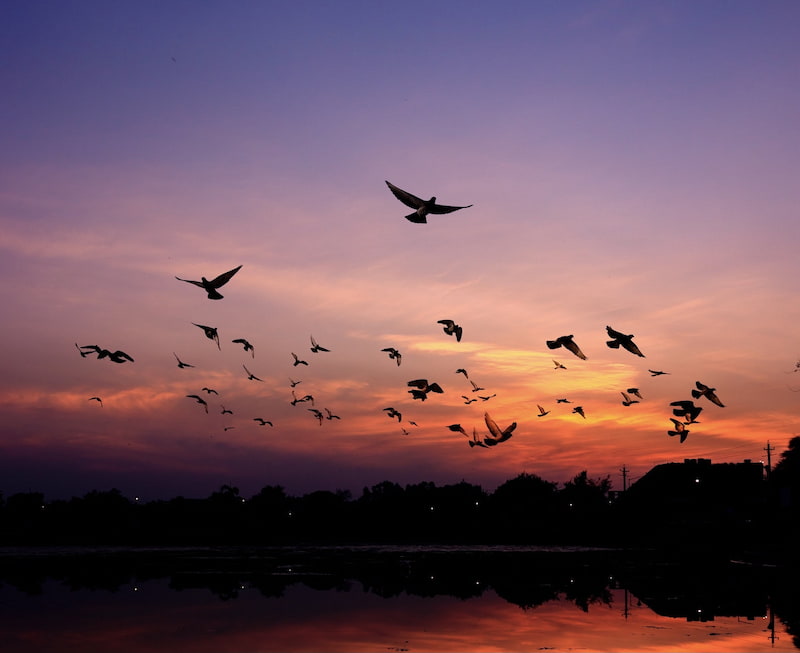
Finally, we come to the last main facet of non-duality which is essentially the fact that everything you’re searching for isn’t in some magical future. It’s right here, right now.
As spiritual teacher and author Unmani writes,
There is no journey. This is it. There is nowhere else. This has always been it. There never has been a past and will never be a future. This is all that has ever been longed for. This is it.”
And also,
Life is. There is no one living it. It is not ‘my life’. There is no ‘me’ that lives. But I am Life. This ‘I’ is not a personalised ‘me’. It is not an assumed separate person. There is no implied separation between the writer and the reader. This ‘I’ is ‘you’. This ‘I’ is all that is. I am Life itself.
Ancient Zen Master Huang Po put it this way,
That which is before you is it, in all its fullness, utterly complete. There is naught beside. Even if you go through all the stages of a Bodhisattva’s progress toward Buddahood, one by one; when at last, in a single flash, you attain to full realization, you will only be realizing the Buddha-Nature which has been with you all the time; and by all the foregoing stages you will have added to it nothing at all.
In other words, all of our seeking, all of our striving on the spiritual path to get to some future “enlightened state” or liberated Self, is missing the point.
This is It.
This moment, this experience of the present moment, this breath, these sounds, the birds calling outside and the traffic passing by – when seen through the eyes of no-self, is all that we’re looking for.
To the self, the sense of “me” and “my spiritual path,” this all sounds hopelessly depressing at worst (or dreadfully boring at the very least). But again, you must directly experience this to really understand it, and to experience it, there must be a seeing through of the false sense of self.
As the name “non-duality” implies, there are not two different states of being – everything is connected to everything else. The thought of some future state of paradise or enlightenment solidifies a separate sense of self, a sense of “me” seeking for “that.” And as non-duality teacher Lisa Cairns says, “All suffering comes from seeking.”
But do we just stop seeking then? As Cairns goes on to say, “… it’s not about you not becoming a seeker – you’ll become depressed if you try to not be a seeker. While you’re there, that’s what you do, you seek. It’s like telling a rabbit that it’s not allowed to hop. A seeker is there, that’s what it does, seeks.”
Trying to become something or not become something is still operating from a sense of separate self. The point is to see through the absolute transitory nature of this sticky energy we call “self” and return back to what we’ve already and always been: Life Itself.
Non-Duality and Spiritual Awakening
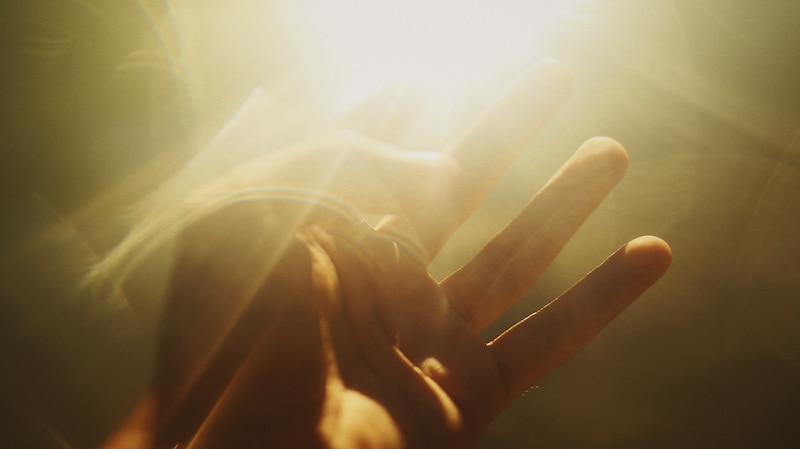
So what’s the relationship between non-duality and the spiritual awakening process?
On a human level, on a subjective level, there’s a metaphorical journey we go through which has been clearly explained and laid out in detail on this website.
Most of us start with some kind of spiritual calling, then find guidance, turn inwards, face the darkness within us, experience moments of illumination, and go through cycles of integration and rebirth. All of this follows the “Hero’s Journey” story arc first discovered by mythologist Joseph Campbell.
This psycho-spiritual journey of growth is what we call the spiritual awakening path because layers of us slowly dissolve and the Centre with us gradually expands (like a flower).
But on a non-human, absolute level, there’s no journey or awakening path for that is a story created by the mind. In the terms of non-duality, everything simply Is – and any attempts to label or create division are products of the mind and its illusory sense of separate self.
So we have an interesting paradox here: the spiritual awakening journey both does and doesn’t exist. But the beauty of non-duality is that it accepts that paradox, understanding that we’re both human and divine, and also neither of those two things – we are everything and nothing at the same time.
In the words of the sacred Heart Sutra text,
Form is no other than emptiness, Emptiness no other than form.
Guru and philosopher Nisargadatta Maharaj echoes this paradox, writing:
Wisdom is knowing I am nothing, Love is knowing I am everything, and between the two my life moves.
On a human level, the pathless path of non-duality often comes right near the end of the spiritual awakening journey when one is sick and tired of all the searching and grasping. However, with that being said, some fortunate souls find and comprehend non-duality right at the beginning of their awakenings.
As a pathless path, non-duality can never really be written about accurately unlike the spiritual awakening journey (which is why lonerwolf is dedicated to spiritual awakening and not non-duality). Words, by their very nature, are dualistic, and so they can only feebly point to the underlying truth that is non-duality.
So with all this talk, how do we actually experience non-duality for ourselves?
How to Practice Non-Duality
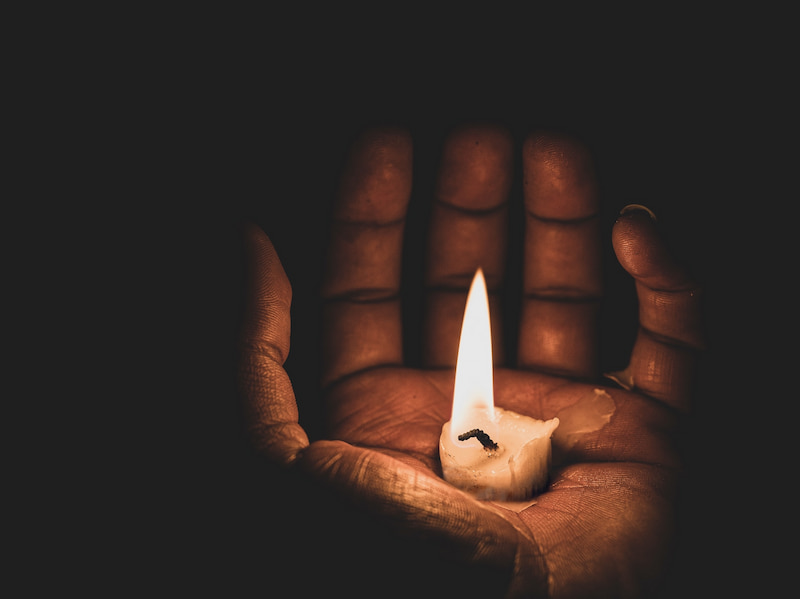
If you were to ask a non-duality teacher how to practice non-duality, their first response would likely be something along the lines of, “Who is the one that wants to practice non-duality?”
What this means is that the very one (the ”me”) wanting to practice non-duality is the very illusion that non-dual philosophy is geared toward dismantling. If your mind is getting tied in knots, don’t worry, that’s normal. Non-duality isn’t meant to be grasped by the mind but experienced as a shift in awareness.
With that being said, on a human level, we need something to work with. So here are three practices that can help you have a direct experience of non-duality.
(Please note that you may or may not experience anything. Stick with whatever practice resonates with you for at least a month and see what happens.)
- Meditate on the question “Who am I?”
The “who am I?” meditation was first formalized by sage and mystic Sri Ramana Maharshi. This simple question serves as a koan that exhausts the mind in its pursuit of a solid answer. After lots of searching, we realize that, actually, who we thought we are isn’t the case. And in fact, there is no static separate self to begin with!
- Contemplate the underlying uniting behind the play of opposites
Non-duality at its core is about total spiritual integration and sensing the Unity inherent in all life. So long as we keep seeing everything in black or white terms, we’ll remain in a state of suffering. We’ll chase pleasure and avoid pain endlessly. We’ll reject and punish others. We’ll condemn parts of ourselves and falsely celebrate other parts.
However, by understanding that everything, in the words of Thich Nhat Hanh, “inter-is” – or everything is dependant on everything else – we can experience less duality and less division within us.
To contemplate the underlying unity behind the play of opposites, bring to mind some of the opposites within you. These might be for instance, tolerant/intolerant, nice/mean, mindful/unmindful, happy/sad, angry/peaceful, selfless/selfish, and so on.
Now contemplate how each quality depends on the other to exist. For instance, without the hot torrents of anger, we wouldn’t know the cool waters of peace. Without being open-minded we wouldn’t be able to notice our closed-mindedness. Without sorrow, we wouldn’t be able to experience joy.
If there was no reality of hardness, if everything was one big squishy marshmallow and nothing at all was hard in the universe, you wouldn’t be able to appreciate the softness. You’d take it for granted – softness would be boring – it wouldn’t even really exist because it would be so omnipresent.
Finally, contemplate how both opposites exist within you at all times, are needed and necessary, and in fact, are two sides of the same coin.
If you need a symbol to meditate on, I recommend meditating on the vesica pisces, the cross, the star of David, or the yin yang symbol, as they’re representatives of non-duality.
- Mental noting meditation
My first insight into the reality of non-duality happened years ago when I first began my mental noting meditation practice.
Thought noting is a mindfulness meditation technique that helps you to become vividly aware of the thoughts running through your mind by noting them. It was this style of meditation that first helped me to see that I wasn’t in fact my thoughts – and in reality, I didn’t control them either, they just spontaneously arose and then faded away.
To do the mental noting meditation, pay attention to the contents of your mind. What’s going on in there? Perhaps a memory comes up, so note quietly “memory.” Perhaps some plans for the future arise, so mentally note “plans.” You don’t need to say out loud what’s going on (unless you’d like to). By mentally noting what comes up, whether it’s a feeling, a thought, a sensation, a memory, or something else, you can start to see that you are not your thoughts. This realization can create the necessary inner space for more non-dual realizations to take place – it can be liberating to recognize that your thoughts don’t (and can never) define you!
Non-Duality FAQ

Here are some other questions that are regularly asked about regarding non-duality which you might find helpful:
Will non-duality solve all my problems?
In the words of teacher Scott Kiloby,
“Yes, nondual realization is a profound and life changing thing. No, it is not the answer to all suffering.”
Non-duality is very much a transcendent path, but at the same time, it’s not exempt from traps such as spiritual bypassing and spiritual egotism.
Philosopher, writer, and speaker Alan Watts once compared non-duality to the myth of Icarus – an ancient tale of a young man who flew too close to the sun. Non-duality can certainly feel like that if it isn’t grounded. That’s why Watts recommends the path of mindfulness used in conjunction with non-duality – it helps to ground the experience.
How do I practically apply non-duality to my life?
In the words of non-duality teacher Rupert Spira,
“There are three essential steps in the spiritual path: the first is to notice that one is not a body or a mind, but rather the Awareness in which these appear, and with which they are known; the second is to explore the nature of Awareness and discover that it doesn’t share the destiny or the limits of the body and mind?–?that is, to discover its eternal, infinite nature; and the third is to live a life that is consistent with this understanding.”
These three basic steps can help you to practically apply non-duality to your life.
Can I achieve or earn non-duality somehow (e.g., with enough spiritual practice)?
Non-duality doesn’t work the same as school, university, or your workplace. You can’t achieve or earn it, although you can learn about it.
Non-dual shifts in consciousness (often called Self-realization, Illumination, Oneness) happen when they happen organically, without your doing. The “you” that’s trying to earn, achieve or “get it” in the first place is the very obstacle in the way!
There’s no point trying to get rid of your sense of self either – that only reinforces your sense of self. Only the ego wants to kill the ego.
So the only practice is to let go, surrender, and learn more about non-duality – that’s why it’s called a “pathless path.”
***
To close, I’ll leave you with a beautiful quote by poet and spiritual teacher Jeff Foster which uses the ocean as a metaphor for non-duality:
I don’t think non-duality is something you can actually understand with your mind; but you know it with your heart. You’ve always known it, actually. It’s like when you look out at the ocean, you see hundreds, thousands of waves, of all shapes and sizes, which seem to be very separate from each other. We are like the waves. Every person, every animal, every tree, every drop of rain, every planet. We appear to be separate beings, but actually, we are all expressions of the One Life, the ocean of Consciousness; no wave is actually separate from the ocean at all.
Tell me, what are your thoughts about non-duality? Have you ever had any non-dual experiences? I’d love to hear below.
About the author:
Aletheia Luna is an influential spiritual writer whose work has changed the lives of thousands of people worldwide. After escaping the religious sect she was raised in, Luna experienced a profound existential crisis that led to her spiritual awakening. As a psychospiritual counselor, tarot reader, and professional writer, Luna’s mission is to help others become conscious of their entrapment and find joy, empowerment, and liberation in any circumstance. See more of her work at lonerwolf.com.
This article, What is Non-Duality?, was originally published on lonerwolf.com, reproduced with permission.

If you've ever found value in our articles, we'd greatly appreciate your support by purchasing Mindful Meditation Techniques for Kids - A Practical Guide for Adults to Empower Kids with the Gift of Inner Peace and Resilience for Life.
In the spirit of mindfulness, we encourage you to choose the paperback version. Delve into its pages away from screen glare and notifications, allowing yourself to fully immerse in the transformative practices within. The physical book enriches the learning process and serves as a tangible commitment to mindfulness, easily shared among family and friends.
Over the past few years, Wake Up World has faced significant online censorship, impacting our financial ability to stay online. Instead of soliciting donations, we're exploring win-win solutions with our readers to remain financially viable. Moving into book publishing, we hope to secure ongoing funds to continue our mission. With over 8,500 articles published in the past 13 years, we are committed to keeping our content free and accessible to everyone, without resorting to a paywall.


